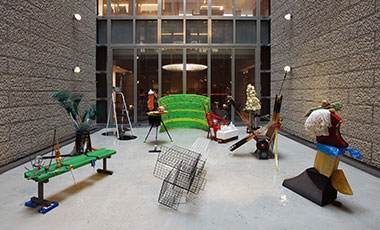In celebration of the publication of TheArtro, it has conceived a special column called 'Art Talk' in which a domestic exhibition that has recently attracted much attention in the Korean art scene is examined from a variety of angles. Its first subject is (Do Ho Suh - Home within Home) , a solo exhibition of Suh’s artworks, which made a spectacular stir in the Korean art scene in the first half of 2012. This exhibition was Suh’s individual show that was presented after the lapse of almost a decade in Korea since his show in 2N3 at Arlsonje Center. The exhibition featured about forty works by Suh in various forms including sculpture, video art and drawing while focusing on one of Suh’s main creative motifs, ‘Home,’ through which Suh has been highly esteemed in the intemational art scene and which has been embodied in his works of the Seongbuk-dong hanok, his past residences in New York and Berlin. Here in this ArtTalk, the exhibition is observed by an architect, an art critic and a design cultural critic from their own articulate points of view.
Home within Home_Globalization, Identity and the Mind
Hanok and Apartments : Questions as to the difference
[Reflection], the first work a viewer comes across in the exhibition, consists of a gate. This subject is the gate of the artist’s hanok in Seongbuk-dong, which is known to be modeled after the male quarters of Yeongkyeong-dang in Changdeok-gung Palace. The images of the elements of traditional Korean residential architecture are also found in [North Wall](Do Ho Suh_North Wall) and [Seoul Home/Seoul Home](Do Ho Suh_Seoul Home / Seoul Home). Light blue silk - a kind of silk apt for summer garments - which is the material used to depict such parts of hanok in these works, is Suh’s inimitable artistic language whose texture stimulates one’s visual imagination by being used to represent the ceiling of the titled roof and details of the house together with metal frames. The color of jade is also an Eastern motif, and it reminds one of an idea or image of the East together along the structure of hanok. Especially, the hexagonal pattern of windows and doors and wooden lattices are differentiated from other works as they generate a sense of rhythmic movement in company with the circular tiles at the edge of eaves of tiled roofs. Suh’s another main subject matter is Western-style houses. [348 West 22nd Street, New York](Do Ho Suh_348 West 22nd Street, New York) shows a mass-produced apartment-style house. A spatial arrangement of a modernistic residential house is exemplified by the studio in the New York house whose four-cornered space has a tiny kitchen and a bathroom that are located on its one side abreast, including the grayish blue residential space and the orange-color staircase in the light pink corridor. Corresponding to the peculiarities of the mass-produced house, the layout of the bathroom and the kitchen is decided in accordance with the utility system for the installment of the water fittings and fixtures, and the basic unit consisting of the residential spaces and the common areas such as corridors and staircases is aptly designed for its mass-production. That the dimensions of the items of furniture represented within the spaces are felt slightly incorrect is indebted to the difference between the East and the West. Particularly, [Blueprint](Do Ho Suh_Blueprint) shows a townhouse in New York, and the townhouse is represented here in the actual size of the cobalt blue three-story building, and the height of the gate seen at the foot of the stair appears much taller. Each work is differentiated by the colors used and is very distinct in terms of scale and spatial design. Yet the common denominator of these houses lies in the texture and transparency engendered by the use of the same material. The differentiation between the West and the East can be detected only in the architectural images of hanok/apartment, which are discriminated due to the temporal and regional differences between them, and the idea of ‘the East vs. the West’is reduced to a universal ‘space’ by means of the identicalness of the objecthood of the material used in the representation of them. Hence, the East and the West become the ingredients of the first question in regard to the entity of identity. And then, the boundary between the internal and the external is broken down and expunged. The walls and doors made of thin fabrics are nothing but material object that can be seen through from both inside and outside. A house stops being a house, and it furthers itself to be engaged in the matter of identity as a question that is inquired into in endless repetition.
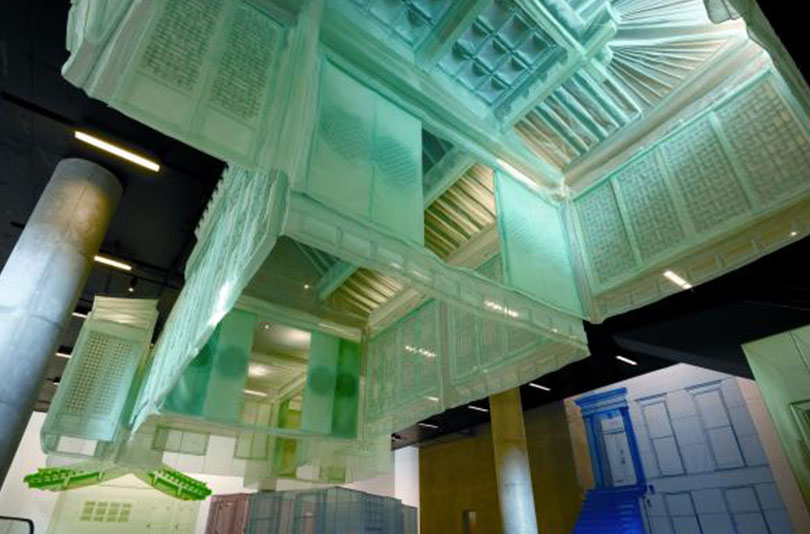 Do Ho Suh_North Wall
Do Ho Suh_North Wall
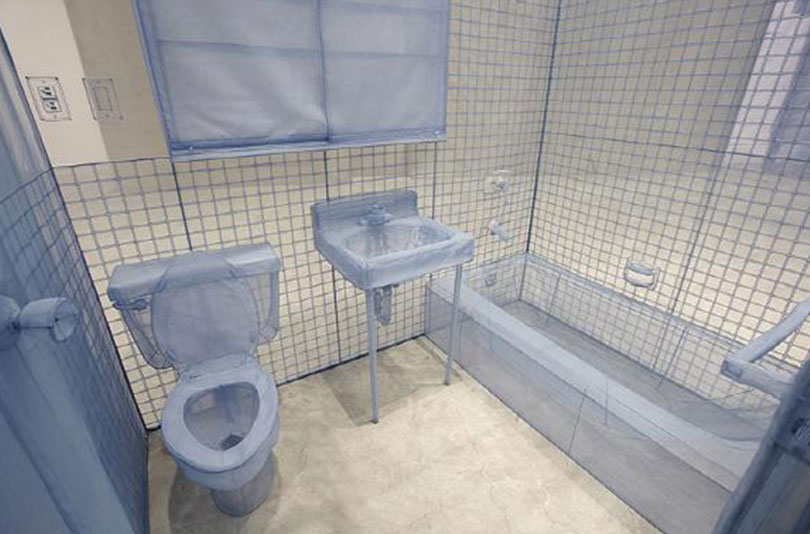 Do Ho Suh_Seoul Home / Seoul Home
Do Ho Suh_Seoul Home / Seoul Home
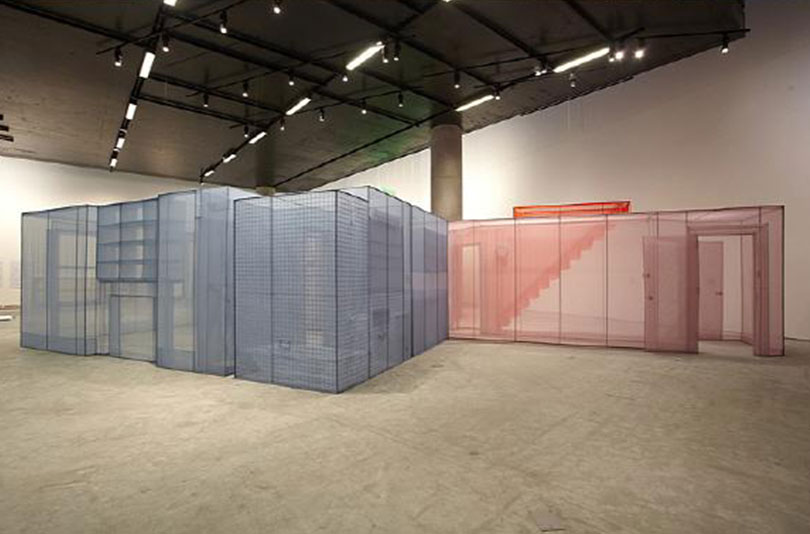 Do Ho Suh_348 West 22nd Street, New York
Do Ho Suh_348 West 22nd Street, New York
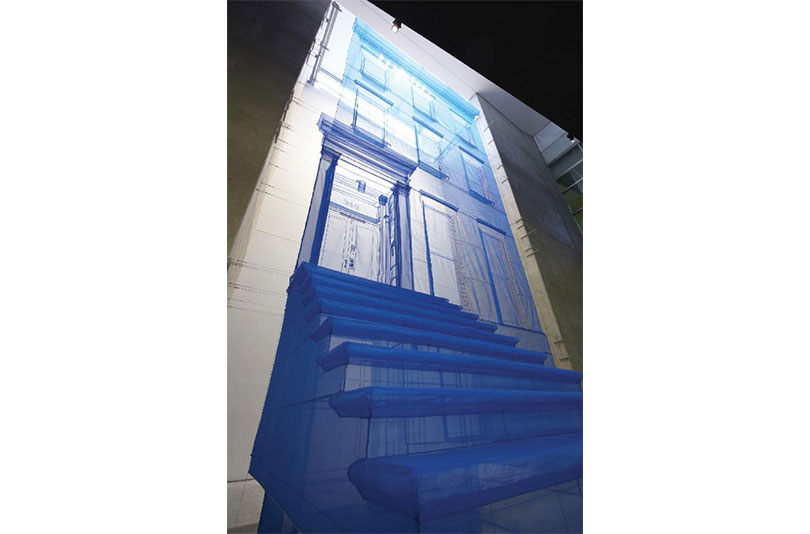 Do Ho Suh_Blueprint
Do Ho Suh_Blueprint
House : The identity of the Global Citizen
In this era of globalization, we all have become travelers. Our journeys unceasingly continue and we are always on the move. Nonetheless, we attempt to separate our residential places from the outside in terms of space. In the actual construction of a house, its site and spaces are determined on the criterion of ‘a physical and materialistic house’ rather than that of ‘a house as imagined in the mind’. Within the interior space of a house, our thinking is not constrained and we imprint our personal traces there. We form ourselves and mold the foundation for our identities while living in our spaces. One comes home to avoid the hectic chaos in the outside because a house is a sort of shelter in which his or her mind is nourished and protected. A house as a physical and psychological sanctuary is related after all to the formulation of ‘self,’ namely, ‘my’ identity. One’s identity can be characterized as the maintenance of the coherent conception of his or her self, and it is an idea of one’s characteristic and idiosyncratic nature that differentiates him or her from the others. And this makes it similar to the notion of a house. For one’s house is peculiar to him or her. For it is a house that the mental self is reflected on materialistically and is carved into and is generated in. Under the economical, political and cultural circumstances that have been globalized and similarly coded, however, the houses in which people live and their thoughts have become alike increasingly. The modern concept of ‘utopia’ has contributed to the provision of better residential environments through the movement to improve the quality of one’s life, which has been based on the schemes of ‘standardization’ and ‘rationalization’, yet it also has played its role in the globalization of the world having assisted by the logic of capital. Apartment buildings have been raised high by piling up residential units that can be mass-produced, and newly developed cities have been built in the outskirts of metropolises to satisfy the needs of those who dream of becoming middle-class families. As a result, almost every city throughout the world is crammed with skyscrapers or mass-produced houses, and there people’s lives have been universally uniformed. This element of universality is an attribute of globalization. As citizens living on the enormous horizon of globalization, we are hopelessly subject to the rupture of identity in our spaces deprived of time. The relentless on-the-move to perform identical labors and tasks results in the transformation of spaces into nothing but quadrilateral cubes of universality without inherent distinctiveness.
The artist delves into his identity as a perpetual traveler living in the age of internationalization by initiating his work at his hanok in Korea and by extending it to include his homes in New York and Berlin. His homogenized identity go beyond the inner and the outer and the East and the West so as to be transparent as it is interlaced with spaces, like the approximated forms of the houses all over the world. A house is now not of settlement, which defines placeness, and it has become a place for a short stay and part of the process through which one moves further to the next destination. A home as the object of the artist’s self-examination attests to his identity, and it is represented in the forms of images eliminated of placeness while he circumnavigates between different subjects hanok and an apartment and between divaricate mediums fabric/drawing and video installation/sculpture. His home as a space that is capable of being folded and unfolded obtains absolute spatialty, which releases its confinement and allows it to be erected anytime anywhere. Together with the unintermitting everyday routines like dressing and undressing, at the moments when it is linked to other spaces, the element of time is eradicated. A space tells its identity through the infinite iteration of the present. The present definition of a home that it is subject to cyclical generation and degeneration, incessant visiting and leaving and recurrent coming and going illustrates the way we exist. What are robbed of settlement are not just our identities. Our minds are on a permanent move blindly abiding by consumption-oriented social milieus and our desires, like ‘house’ whose innate notion has been alchemized. It would be nice if one’s mind as the origin of one’s identity sits there genially like a house in the original sense.
Do Ho Suh - Home within Home
Written as "Home" and Read as "집" _ Kang Jungeun(Architect)
Suh Do Ho: Transparent and Open Spaces "This potable Korean house is my parachute" _ Lee Daebum(Art critic)
Home within Home_Globalization, Identity and the Mind _ Helen Cho(Design cultural critic)

Helen Cho / Design cultural critic
After her study in art theory in college and herreception of a master’s degree in the U. S., Helen Cho has come back to Korea and studied design theories and history both in practice and in college. She is devoting herself to the production of theories and discourse that can be put into practice in everyday life while projecting critical perspectives to today’s arts, culture and design.

